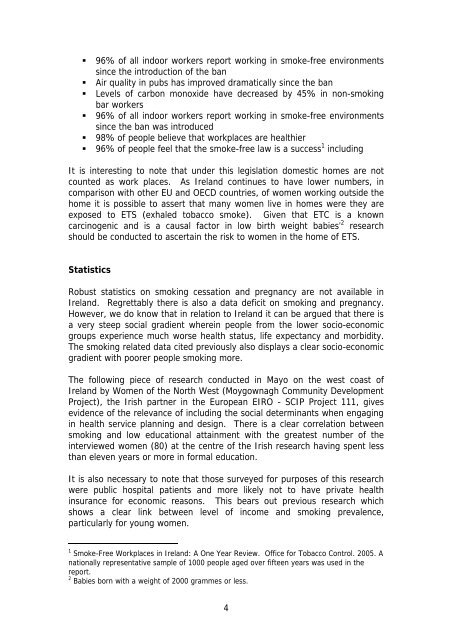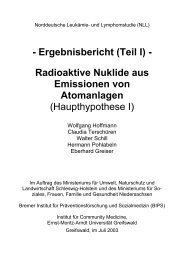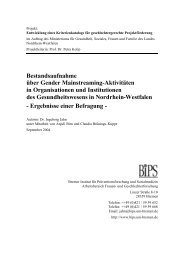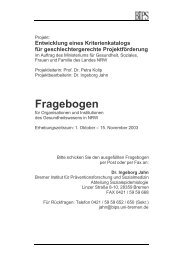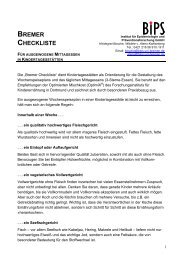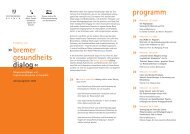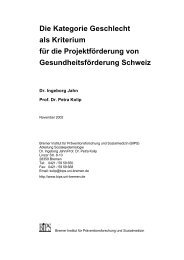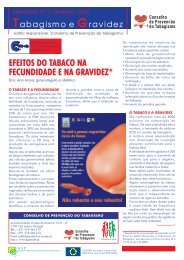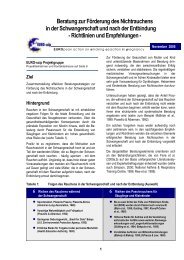You also want an ePaper? Increase the reach of your titles
YUMPU automatically turns print PDFs into web optimized ePapers that Google loves.
� 96% of all indoor workers report working in smoke-free environments<br />
since the introduction of the ban<br />
� Air quality in pubs has improved dramatically since the ban<br />
� Levels of carbon monoxide have decreased by 45% in non-smoking<br />
bar workers<br />
� 96% of all indoor workers report working in smoke-free environments<br />
since the ban was introduced<br />
� 98% of people believe that workplaces are healthier<br />
� 96% of people feel that the smoke-free law is a success 1 including<br />
It is interesting to note that under this legislation domestic homes are not<br />
counted as work places. As Ireland continues to have lower numbers, in<br />
comparison with other EU and OECD countries, of women working outside the<br />
home it is possible to assert that many women live in homes were they are<br />
exposed to ETS (exhaled tobacco smoke). Given that ETC is a known<br />
carcinogenic and is a causal factor in low birth weight babies’ 2 research<br />
should be conducted to ascertain the risk to women in the home of ETS.<br />
Statistics<br />
Robust statistics on smoking cessation and pregnancy are not available in<br />
Ireland. Regrettably there is also a data deficit on smoking and pregnancy.<br />
However, we do know that in relation to Ireland it can be argued that there is<br />
a very steep social gradient wherein people from the lower socio-economic<br />
groups experience much worse health status, life expectancy and morbidity.<br />
The smoking related data cited previously also displays a clear socio-economic<br />
gradient with poorer people smoking more.<br />
The following piece of research conducted in Mayo on the west coast of<br />
Ireland by Women of the North West (Moygownagh Community Development<br />
Project), the Irish partner in the European EIRO - SCIP Project 111, gives<br />
evidence of the relevance of including the social determinants when engaging<br />
in health service planning and design. There is a clear correlation between<br />
smoking and low educational attainment with the greatest number of the<br />
interviewed women (80) at the centre of the Irish research having spent less<br />
than eleven years or more in formal education.<br />
It is also necessary to note that those surveyed for purposes of this research<br />
were public hospital patients and more likely not to have private health<br />
insurance for economic reasons. This bears out previous research which<br />
shows a clear link between level of income and smoking prevalence,<br />
particularly for young women.<br />
1 Smoke-Free Workplaces in Ireland: A One Year Review. Office for Tobacco Control. 2005. A<br />
nationally representative sample of 1000 people aged over fifteen years was used in the<br />
report.<br />
2 Babies born with a weight of 2000 grammes or less.<br />
4


